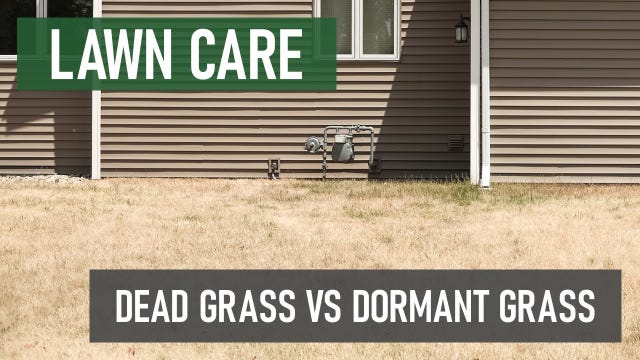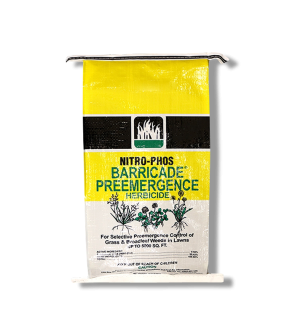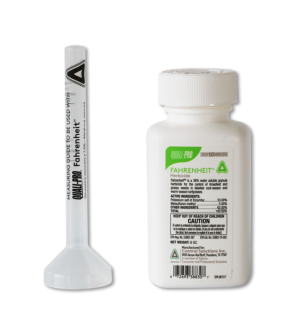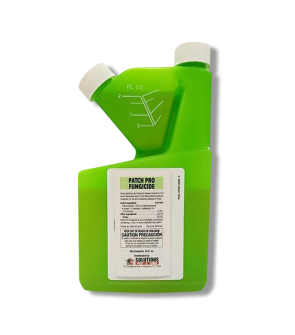Gain access to personalized product screening, the best pricing, rewards, and more!
Most Effective Products
How to Tell the Difference Between Dead or Dormant Grass
This page is a general guide for distinguishing between dead and dormant grass. Follow this guide and use the recommended methods, and we guarantee 100% improvement in the appearance of your lawn and a better understanding of the type of turf you have.
Brown patches of grass are a common occurrence that can be hard to identify. It will usually indicate that your lawn is either dormant or possibly dead. However, these situations puzzle even the most experienced homeowner, so understanding the difference between dead and dormant grass can save you time and money.
Understand that any warm-seasoned or cool-seasoned turf can become brown from death or dormancy. It may take some time to identify the true nature of why your turf is brown. However, with the following steps, you can find a quicker answer to the condition of your lawn.
By following the methods or tips suggested in this DIY article, you can help save your lawn and improve its appearance. If you have any questions, please call, email, or stop at one of our stores, where our trained professionals can help you further.
Dead vs. Dormant Grass

Knowing the difference between dead and dormant grass is beneficial when determining its state.
Dead Grass- will appear brown, brittle, rough, and dry to the touch. It will not hold the original color it once contained due to loss of nutrients, roots, moisture, or sometimes disease. Dead grass will turn brown due to fungi, disease, excess or decrease of nutrients, high humidity, heat, increase or decrease of moisture, thatch, or compact soil within your turf.
The best way to determine the cause of your dead grass is to perform a soil test to see if there are fungi, diseases, or excess or decreased nitrogen in your turf.
Dead grass cannot be brought back to life or recovered. The only thing you can do is replace dead grass by dethatching it and planting new seeds.
Dormant Grass- will also appear brown and lifeless, but unlike dead grass, it can be recovered or returned to its original state. Dormant grass turns brown because it stores energy or water to survive the upcoming season.
Depending on the species of grass it can have different lengths of dormancy. Generally, turf can stay dormant for one month before it starts to die.
How To Tell If Your Grass Is Dormant Or Dead
When you notice brown grass, ask yourself the following questions:
- Is this the time of year for your turf to go into dormancy?
- Does your grass pull out easily, or is it difficult?
- What has the weather been like lately?
- Does my entire lawn appear brown, or is it in patches?
By asking yourself these questions, you can have a better idea of what you're dealing with. If unsure, then take a look at the following methods to determine if you have dormant or dead grass.
1. What is the Pattern of Brown on Your Lawn?
When your lawn is dormant, the entire area will typically be a solid brown. It will not appear in patches or sporadic patterns across your yard. If so, you will likely have a disease or dead grass problem.
2. Perform a Tug Test
A simple method for determining whether your grass is dormant or dead is to simply tug on the brown foliage. Take a small handful of brown turf and tug. If the brown foliage pulls easily from the soil, then it is dead, but if the turf has some difficulty when pulled, then it is dormant.
3. Water Your Lawn
One of the lengthiest tests you can perform is to water your lawn consistently for a few weeks. Often, your turf can become brown from a lack of moisture.
Depending on your turf species, you will want to water at least once a week with no more than 1 1/2 inches of water per week. You should start to see your turf improve in color and length within a few weeks.
If you do not see any visible changes, your turf may be dead. Once it is dead, there is no level of care or products to recover it.
4. Take a Look at Your Weather
Both warm-seasoned and cool-seasoned grasses respond to weather changes throughout the season. Each grass species will have a preference for hot or cool temperatures. Because grass has varying dormancy and growth periods, weather directly affects its appearance.
Cool-seasoned grass will be dormant when the weather has been consistently warm, resulting in the turf turning brown.
Warm-seasoned grass goes into dormancy when temperatures remain less than 80 degrees Fahrenheit or during prolonged cold periods, such as winter.
Based on the conditions for your turf, it should return to its natural color when the weather returns to normal.
How to Revive Your Dormant Grass
While dormant grass may appear lifeless, it is actually waiting for you or nature to wake it up. To help promote your turf out of dormancy, follow the recommended steps with care.
Step 1: Water Consistently
Awaken your turf with a consistent water schedule. A consistent schedule should have your turf watered at least an inch of irrigation per week.
Cool-season grasses especially appreciate proper watering during summer. Deep watering drives the roots further into the ground, elongating and strengthening their hold on the soil.
For best results, water in the early morning, allowing your weakened turf enough time to absorb the moisture into its roots.
Until your dormant turf turns green, you cannot proceed to the next steps.
Step 2: Reduce Foot Traffic
Limit your amount of activity and foot traffic on your dormant turf if possible.
During dormancy, your turf consistently draws from its storage of nutrients. When you walk on it, you are sending signals for your turf to prepare for the upcoming stress of your activity, thus increasing its time to awaken from dormancy.
Step 3: Mow as Needed
Cutting your dormant grass is a touch-and-go situation, but with the proper mowing enforced, you can help revive it.
During dormancy, it is advised to mow only as needed. Your turf uses all of its energy to promote new growth, so it is best to cut your grass no more than once every two weeks.
You may be tempted to mow when you notice that your grass is higher than three inches. However, it is best to wait until you notice its growing pattern.
If your turf is growing quickly and maintaining a height greater than three inches, you may mow. However, if it takes several days or weeks for your dormant turf to reach a height greater than three inches, mowing should not be completed. By allowing the grass blades to grow at this height, you are helping to lessen the amount of brown within your yard.
When you mow, you are also helping to spread natural fertilizer across your lawn. Cutting healthy turf will release nutrients back into the earth and awaken your dormant grass faster.
How to Prevent Dead Grass
Brown grass can be a confusing sight on your property, even to the most experienced homeowner. Unfortunately, once turf has died, little can be done to save it. However, you can still save your turf from dying by following some of the preventative measures listed.
Yellow to brown patches could indicate fungi or disease in your lawn. If this is the case, a fungicide such as Patch Pro will be your best bet to recover your lawn. Patch Pro is a recommendable product that will eliminate any disease or fungi on plants or lawns within 1 to 3 weeks. As a residual, it will remain in your lawn for up to 30 days, preventing diseases or fungi from returning to your yard.
For best results, refer to the label for the appropriate monthly application to ensure the correct amount of Patch Pro Fungicide is being used.
Another measure to prevent dead grass is to apply a pre- or post-emergent herbicide. By applying a pre-emergent herbicide, you are preparing your lawn to fight against weeds before they emerge.
Barricade Pre-Emergent Herbicide is a granular product that prevents many weeds from germinating within your turf. At a rate of 2 pounds per 1,000 square feet, a 10 lb. bag of Barricade Herbicide will treat up to 5,000 square feet.
When weeds have already appeared on your turf, apply a post-emergent herbicide. Herbicides kill more than just weeds, so select your product carefully.
To treat grassy and broadleaf weeds growing in cool-season lawns, you can use a product like 2, 4-D Amine. To kill grassy and broadleaf weeds growing in warm-season lawns, check out Fahrenheit Herbicide.
No matter your choice, always read the herbicide’s label thoroughly before you apply it so you don’t accidentally torch your turf and do more damage.
Unfortunately, there is no way to prevent your grass from dormancy. Once your lawn has become dormant, it should remain so until the appropriate season approaches.
Key Takeaways
What is the Difference Between Dead and Dormant Grass?
- Both dead and dormant grass will appear brown. However, the main difference is that dead grass cannot be recovered, whereas dormant grass can be returned to its natural state.
How Can I Tell If I have Dead or Dormant Grass?
- One of the easiest ways to determine whether your turf is dead or dormant is to perform the tug test. If there is some resistance when you pull out your turf, it is dormant; if not, it is dead.
How Do I Awaken Dormant Turf?
- Begin by watering your lawn with no more than 1 1/2 inches of water per week. The lawn should return to its original color within several weeks.


















